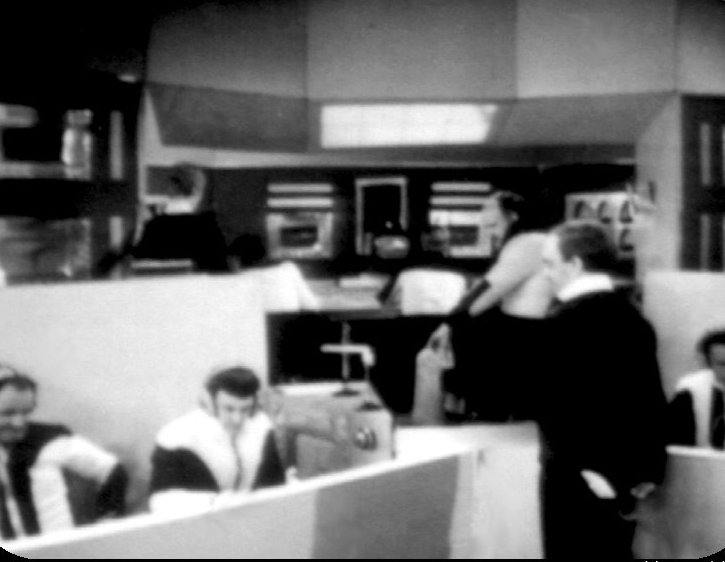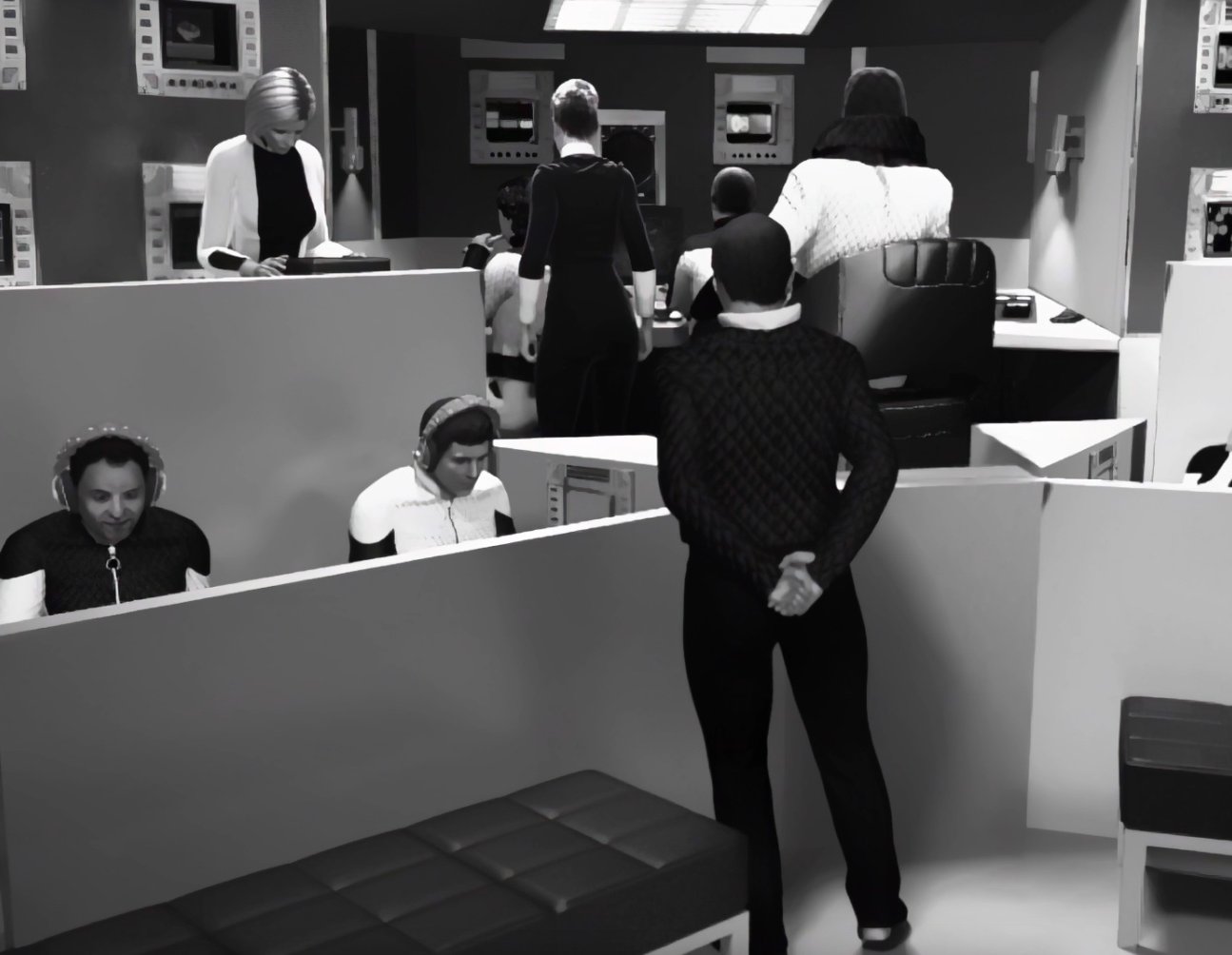
Getting back a lost timelord
Iz and Steve Skinner and the recreation of Who
LightWave Digital - Hey Iz. Why don’t you introduce Steve and yourself for the readers.
Iz Skinner - We are both self-taught animators, Steve is from a corporate video background and I come from an artistic background. I use LightWave on a Mac and Steve, originally a LightWave user from Amiga days, is PC-based. We both work freelance from home.
I’ve recently had a LightWave animation playing at the Museum of Fine Art in Lausanne while Steve has been animating children’s songs for an app developer.
LD - What made you want to take on this series?
IS - As a lifelong Doctor Who fan, I have a full-size Tardis in the garden and a resident Cyberman in the living room while Steve is a more general sci-fi addict. We both love everything Doctor Who but our real passion is for the 1960s Classic era. This recreation of The Wheel in Space is our first project working together but we plan to continue working as a team.
LD - When did you get started and how many people have worked on this story?
IS - I did a couple of short bits of the servo robot way back in 2008, always planning to complete episode one. It wasn’t until May 2022 that I started putting some time in, but then realised that I needed help and luckily Steve, my partner, joined in.
So we took a year to do episode one (23 minutes), with creating the assets and establishing the pipeline. Then the next three episodes took about 13 months. It was just the two of us working part-time. I’m LightWave on a Mac and Steve’s LightWave on a PC.
Steve has been using LightWave his whole 3D career, in fact he remembers your name for helping him with his DCTV box, so many years ago. He started when Modeler was a standalone prog on his Amiga.
LD - Crikey, that’s a blast from the past! That must have been when I was working for Aegis or MicroPACE, back in the late 80s / early 90s. For our readers who might not be familiar with early Who, can you explain further?
IS - Yes, the story is over six 23 minute episodes. Four of the episodes are missing from the BBC archive, so these are the four we have created. Made to match the look and feel of the original 4:3 black and white episodes from 1968. We both still use LightWave 2015 because we just love it and know it really well so we are probably not a great advertisement for LightWave as it is now, plus PBR really isn’t necessary to what we’re trying to do.
Everything on my Youtube channel (from 2006) is made in LightWave (with an occasional touch of Vue) The Wheel in Space episodes are there, too.
Filmed and LightWave


LD - How did you recreate the look of Patrick Troughton and Frazer Hines? You really captured their look.
IS - The likenesses are made using photographs, side and front, just pulling around a standard head to fit the texture. This is a very hit-and-miss affair and can take quite a few attempts to get something acceptable. We usually work in colour, render in colour, then in post convert to black and white and add a slight cartoon filter (to avoid any uncanny valley issues). The sets are constructed using 1960s set photos and as they’re all black and white we use coloured lights to prevent it being too monochromatic... which is of course lost when we convert to black and white.




LD - How much of the story do you have to invent - you have the audio, right? Do you have storyboards or original sketches?
IS - Yes, fortunately we had the soundtrack. Although the BBC lost or wiped many of the early Doctor Who episodes, some fans had recorded the soundtrack on reel to reel tape recorders at the time. Also, tele-snaps exist, these are small thumbnail-sized, black and white images of the monitor photographed during broadcast by a chap called John Cura. These photos were taken about thirty seconds apart and acted as an aid to continuity. Unfortunately, they don’t work entirely as a storyboard as many key moments happen in the 30 second gaps, but they do help with blocking the scenes out. Luckily, the camera scripts do still exist.
We recreated the episodes using a combination of all three, although the script didn’t always match the soundtrack and there are quite a few silences in the audio, so quite a bit of interpretation was required.
The surviving episodes 3 and 6 of The Wheel in Space are currently on BBC iPlayer and also on the Doctor Who: Lost in Time DVD. (iPlayer is only available to UK viewers)
LD - How did you achieve the Prisoner-style bubble things that the Cyberman hand escapes from at the end of episode 2? Also, did you use dynamics for the clothing? Jamie's seems really fluid. Lastly, are the titles the original ones from the show?
IS - Hi, So the prisoner-style bubbles and cloth sim were done in Marvellous Designer, although we did use the LightWave clothFX for the Tardis take off from the water. We also used Bullet dynamics for the fight scene in Episode 5, knocking the furniture and bottles, etc.
The video feedback frames from the intro are original but much shortened and without the original sound - we removed the title sequence to try and circumvent the BBC copyright algorithm on YouTube. We found cutting the episodes in two still got a copyright claim but we were allowed to show them on YouTube. The full intro sequence is preserved in the iPlayer version.
LD - You have several scenes where you have several characters animating simultaneously. Were they all animated at the same time?
IS - In the multi character scenes we do the individual mocap in iPi studio, then bring all the characters into iClone together, which has a duplicate of the set from LightWave, scaled to match. From there the animations of the various characters are adjusted and re-timed. Finally, they are exported to LightWave via FBX for camera animation, lighting and then rendering. The most characters we’ve done in any scene is 12.
LD - You said this was just the start for you and Steve. What episodes to you plan on converting next?
IS - We are currently working on another Doctor Who missing episode, The Web of Fear (episode 3). There is an official 3D animation of this already but it wasn’t terribly well-received by the fan base, so we are creating our own version.
LD - Before we go our separate ways, tell me about the exhibit you produced for the museum?
IS - The exhibition in Lausanne was for the opening of the new Museum of Fine Art, it was a celebration of the railroad. My animation about Breton’s Locomotive was played on a loop adjacent to Edward Hopper’s Railroad Train.
You can see the four episodes that Steve and Iz recreated on Iz’s YouTube channel and readers in the UK can catch the other two episodes that complete the story on iPlayer. Today’s post has been timed to roughly coincide with BBC1 showing the latest Christmas special, which can be seen on Disney+ elsewhere in the world the following day. Have a great end of the year and tune back in soon for more exciting artist focus stories










